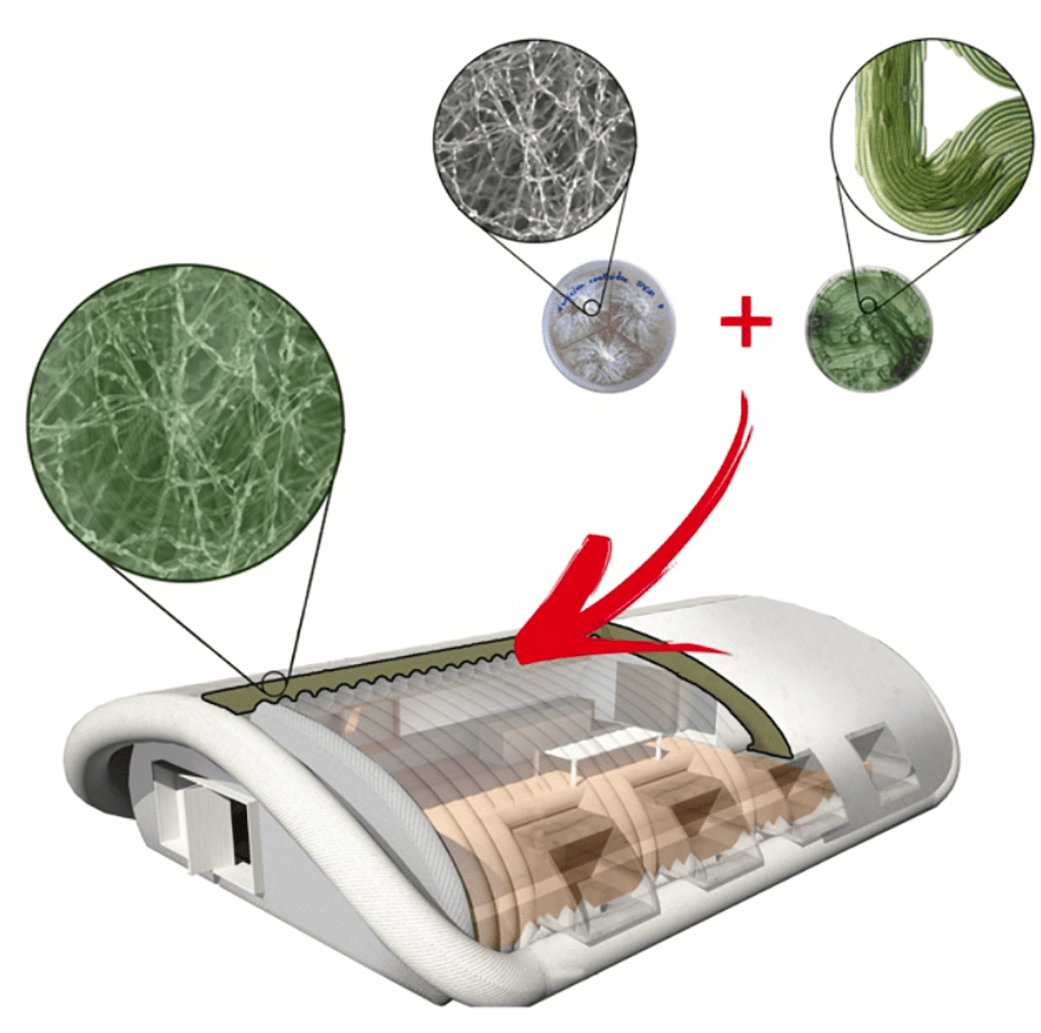Lynn Rothschild
NASA Ames Research Center
A turtle carries its own habitat. While it is reliable, it costs energy. NASA makes the same trade-off when it transports habitats and other structures needed to lunar and planetary surfaces increasing upmass, and affecting other mission goals. Imagine a self-pitching habitat made of a light, fibrous material, with excellent mechanical properties. The material could be used dry, wet, frozen with water or as part of a self-produced composite which could allow such enhancements as radiation protection and a vapor seal. It is self-replicating so the habitat could be extended at a future date, and self-repairing. Some form of this material could be used for a habitat at destination, additional buildings, the shell of multiple rovers and furniture. The fibrous material is fungal mycelium, the vegetative structure of fungi consisting of branching, thread-like hyphae. Mycelial materials, already commercially produced, are known insulators, fire retardant, and do not produce toxic gasses. Metrics for these materials show compression strengths superior to dimensional lumber, flexural strength superior to reinforced concrete, and competitive insulation values. As mycelia normally excrete enzymes, it should be possible to bioengineer them to secrete other materials on demand such as bioplastics or latex to form a biocomposite. Mycelia are more flexible and ductile than regolith alone. As a standalone material or in conjunction with agglutinated or sintered regolith, a mycotectural building envelope could significantly reduce the energy required for building because in the presence of food stock and water it would grow itself. After the arrival of humans, additional structures could be grown with feedstock of mission-produced organic waste streams. Melanin-rich fungi have the ability to absorb radioactivity suggesting that melanized fungal mycelia could provide radiation protection. Lead found in the regolith, or other radiation blocking materials such as water could accumulate in the mycelia providing additional radiation protection. When protected, the mycomaterials can have a long life, but at the end of its life cycle the material could be become fertilizer for mission farming.
Our concept fits within the Mars DRA 5.0 ‘commuter’ scenario, with the major difference being that the habitats and the shells of the rovers would be built at destination. On Earth, a flexible plastic shell produced to the final habitat dimensions would be seeded with mycelia and dried feedstock and the outside sterilized. At destination, the shell could be configured to its final inner dimensions with struts. The mycelial and feedstock material would be moistened with Martian or terrestrial water depending on mass trade-offs, and heated, initiating fungal (and living feedstock) growth. Mycelial growth will cease when feedstock is consumed, heat withdrawn or the mycelia heat-killed. If additions or repairs to the structures are needed, water, heat and feedstock can be added to reactivate growth of the dormant fungi.
The proposed work focuses on filling select key technical knowledge gaps such as the temperature range of mycelial growth, radiation protection, potential for algal feedstock and enmeshed biosensors, mass of inputs and finished product, and material properties of the materials. The potential for enhancing structural and sensing capabilities by the incorporation of the bacterium Bacillus subtilus, is novel. Architectural design concepts based on this vision will be examined for use in a mission context including mass trade-offs, and temperature inputs, as well as suggesting new terrestrial routes to infusion where rapidly built, lightweight structures are desired. If successful in developing a biocomposite material that can grow itself, NASA will have a radically new, cheaper, faster lighter material for designing habitats for extended duration lunar missions, Mars missions, and mobile habitats as well as furniture and other structures.































